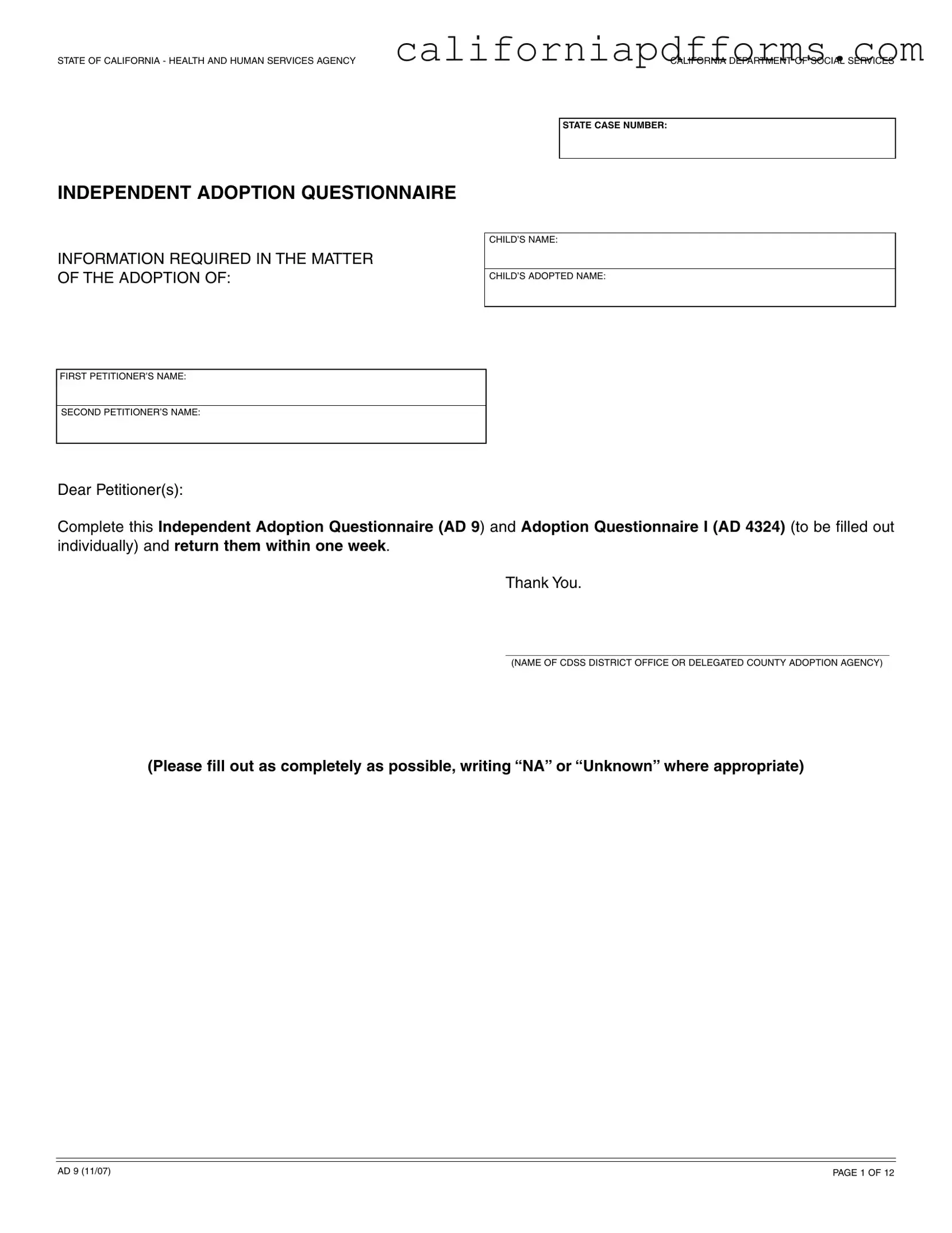Download California Ad 9 Form
The California AD 9 form is an Independent Adoption Questionnaire designed for prospective adoptive parents. This form collects essential information about the petitioners, including their backgrounds, family history, and any relevant legal matters. Completing the AD 9 is a crucial step in the adoption process, ensuring that all necessary details are provided to facilitate a smooth transition for the child.
Ready to take the next step in your adoption journey? Fill out the form by clicking the button below.
Open Your Form Online
